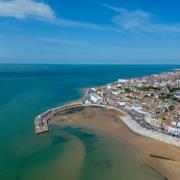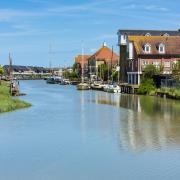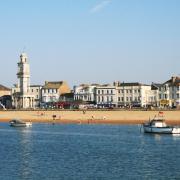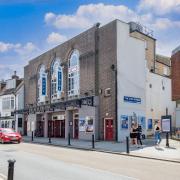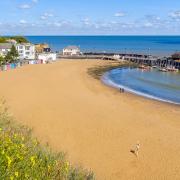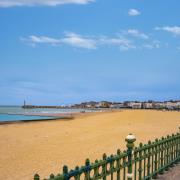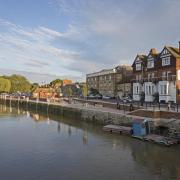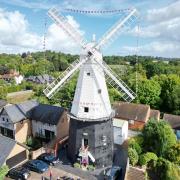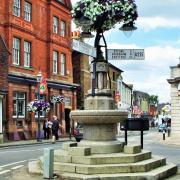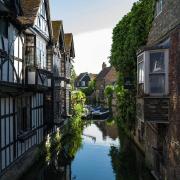From Napoleonic forts and wartime shelters to ancient chalk mines, we explore some of Kent’s underground visitor attractions

1. Dover Castle’s Secret Wartime Tunnels
Beneath iconic Dover Castle, built into the chalk cliffs themselves, is a multi-level network of tunnels that played a pivotal role in the Second World War.
Originally built in the early 1800s as an underground barracks for soldiers in the event of Napoleonic invasion, the tunnels were capable of housing up to 2,000 men.
Fast forward to 1938 and the threat of war saw them become the headquarters of Dover Naval Command. Later it would be where the evacuation of Allied forces from Dunkirk would be co-ordinated by Vice Admiral Bertram Ramsay and his team.
New levels had been added by this time; an underground hospital and a basement. Today the tunnels, and the castle above, are under the care of English Heritage and sections have been staged to bring their wartime history back to life.
The excellent guided tour is an immersive experience, taking visitors right from the King’s declaration of war on the ‘wireless’ to the dramatic evacuation played out through original film projected onto the tunnel walls, and into Ramsay’s nerve centre itself.
But these are not the only underground places to explore in Dover, with medieval tunnels dating from 1216 on the landward side of Dover Castle and the National Trust’s nearby Fan Bay Deep Shelter set on the cliffs.
Visit www.english-heritage.org.uk/dover


2. Margate Caves
It’s unusual to be mentioning a visitor attraction that’s actually not yet up and running, but Margate Caves are set to open in 2019. It will be far from the first time they have welcomed visitors, however, having been open in various guises over the years.
Thought to have originally been a chalk mine, the caves date back to the late 17th or early 18th century, but by the late 1700s they had been abandoned and the site had been built upon.
The owner of the resulting house apparently had no idea about the cave system until his gardener fell down a hole and discovered the entrance. Fascinated by the caves, he commissioned a local artist to paint a series of images on the walls – including one of King George III and one of a hunting scene.
Their first brief outing as a visitor attraction came in 1863, when a local entrepreneur opened them under the guise of ‘Vortigern’s Cavern’. Later, during both World Wars, they served as an air raid shelter and the house above ground was destroyed in the bombing.
They were opened to the public once more in 1953, under several different owners, until structural concerns forced their closure in 2004.
Now, having successfully campaigned against a plan to build housing on the site, a team of volunteers forming The Margate Caves Community Education Trust have had their plans for a new attraction approved. Thanks to local fundraising and lottery grants, the caves have been made safe and have had a full archaeological survey.
They are set to reopen next year, along with a new visitor centre above ground. Meanwhile, the Trust’s learning and outreach officer has been visiting local schools, giving presentations about the caves to get local children involved right from the start.

3. Ramsgate Tunnels
Having only opened in the last few years, you’ll be forgiven for not knowing about Ramsgate Tunnels. Unlike the other attractions on our list, it began life as a man-made railway tunnel.
Opened in 1863, the original tunnel served the Ramsgate Harbour Station but closed in 1926 when a new station was built. Later it was incorporated into the seafront amusements and new tunnels were added to carry a narrow-gauge electric railway.
But it was during the Second World War that they grew into something quite spectacular. Permission was granted for the construction of the most extensive deep-level public shelter in the country.
A network of new tunnels, stretching for nearly three and a half miles, was added and the site was said to be able to shelter an incredible 60,000 people.
The light railway continued to run after the war until 1965 when the track was removed and the tunnels abandoned. It took until 2011 for the Ramsgate Tunnels Heritage Group to win funding for a project to reopen them as a heritage attraction –finally opening to the public in 2014.
Tours begin with a film shown in the Victorian railway tunnel, before heading off into the air raid section. The site has had a makeover this year, adding a free-to-enter tunnel museum, a home front exhibition and a lovely vintage café.
Part of the new collection includes the original piano used to entertain the underground residents during the war.
Visit www.ramsgatetunnels.org
4. Fort Amherst
Fort Amherst is one of Medway’s Napoleonic fortresses, built in the mid-1700s to defend the area and its important dockyard. But the story of its tunnels goes back even further.
The fort is on top of an existing ancient chalk pit, with a series of deep caves extended to include tunnels, gun positions and underground facilities in case of a siege. Never tested, the fort was declared obsolete in 1820 and converted for use as a training ground.
Victorian visitors would flock to see the military reviews held there, with Charles Dickens even including a scene about it in The Pickwick Papers.
During the Second World War, the local Civil Defence unit had their headquarters in the tunnels, and these have been reconstructed for today’s visitors. The Fort Amherst Heritage Trust now owns 20 acres of the land and has slowly restored around half of the fort to date.
Visitors can tour the tunnels, gun batteries, the guardhouse and the Grand Magazine, and the attraction holds all sorts of events throughout the year.
A firm favourite are the award-winning Halloween Horror tours, which have taken place for the past 35 years and are definitely not for the faint-hearted. There are also regular ghost tours, paranormal investigations and re-enactment events.
Visit www.fortamherst.com
5. Chislehurst Caves
By far the oldest of our underground attractions, there is a theory that Chislehurst’s man-made cave system was begun by the Romans.
While that’s just a theory, there is evidence that the caves were in use as early as the 13th century. For hundreds of years people mined flint and chalk, expanding the system until it finally covered an amazing 22 linear miles.
During the Second World War they were opened to Londoners sheltering from the Blitz. It became an underground town, with some 15,000 people living there each night. Part of the caves maintain the look of this period, with bunks, a chapel, toilets and a hospital.
In the 1960s the caves were used as an unusual music venue, seeing underground performances from some of the greatest rock acts of the day. Jimi Hendrix, The Rolling Stones, Led Zeppelin and David Bowie were just some of the big names to take to the small stage in one of the caverns, which still exists today.
Now a successful tourist attraction, visitors to Chislehurst Caves are led on lantern-lit tours, which are as creepy and exciting as they are informative.
With the caverns extending so far, it’s no surprise the tours cover only a quarter of the entire site. Another section is used for a live role play game called Labyrinthe; the rest remains unexplored.




